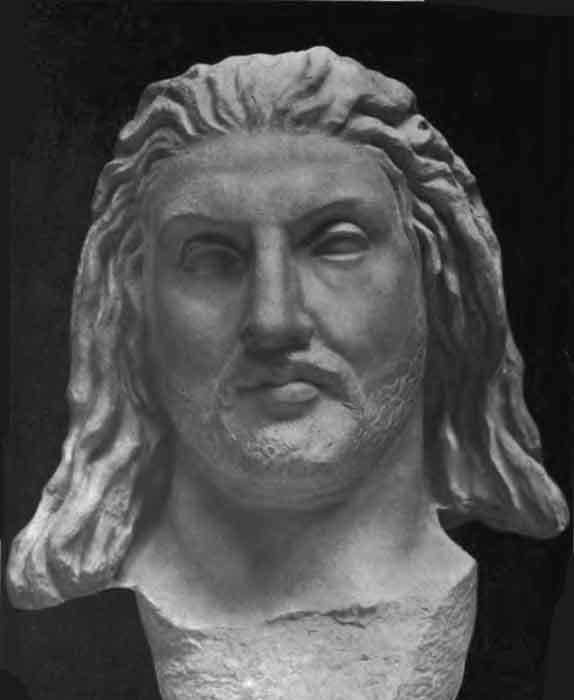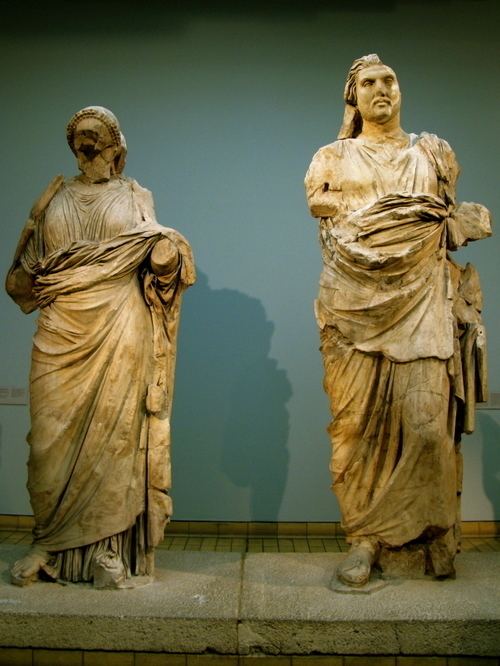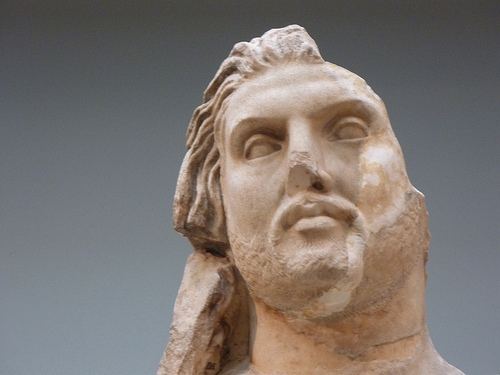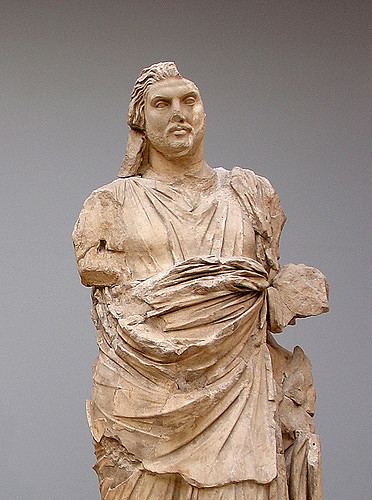Name Mausolus Mausolus Reign 377–353 BC Parents Hecatomnus | Predecessor Hecatomnus Died 353 BC, Halicarnassus | |
 | ||
Siblings Artemisia II of Caria, Ada of Caria, Idrieus | ||
Tomb of mausolus
Mausolus (Greek: Μαύσωλος or Μαύσσωλλος) was a ruler of Caria (377–353 BC), nominally the Persian Satrap, who enjoyed the status of king or dynast by virtue of the powerful position created by his father Hecatomnus who had succeeded the assassinated Persian Satrap Tissaphernes in the Carian satrapy and founded the hereditary dynasty of the Hecatomnids.
Contents

Zot the tomb of mausolus
Biography

Mausolus was the eldest son of Hecatomnus, a native Carian who became the satrap of Caria when Tissaphernes died, around 395 BC.

Mausolus took part in the Revolt of the Satraps, both on his nominal sovereign Artaxerxes Mnemon's side and (briefly) against him; conquered a great part of Lycia, Ionia and several Greek islands; and cooperated with the Rhodians in the Social War against Athens. He moved his capital from Mylasa, the ancient seat of the Carian kings, to Halicarnassus.
Mausolus embraced Hellenic culture. He is best known for the monumental shrine, the Mausoleum at Halicarnassus, erected and named for him by order of his widow (who was also his sister) Artemisia. Antipater of Sidon listed the Mausoleum as one of the Seven Wonders of the Ancient World. The architects Satyrus and Pythis, and the sculptors Scopas of Paros, Leochares, Bryaxis and Timotheus, finished the work after the death of Artemisia, some of them working, it was said, purely for renown. The site and a few remains can still be seen in the Turkish town of Bodrum.
The term mausoleum has come to be used generically for any grand tomb.

An inscription discovered at Milas, the ancient Mylasa, details the punishment of certain conspirators who had made an attempt upon his life at a festival in a temple at Labranda in 353 BC.
